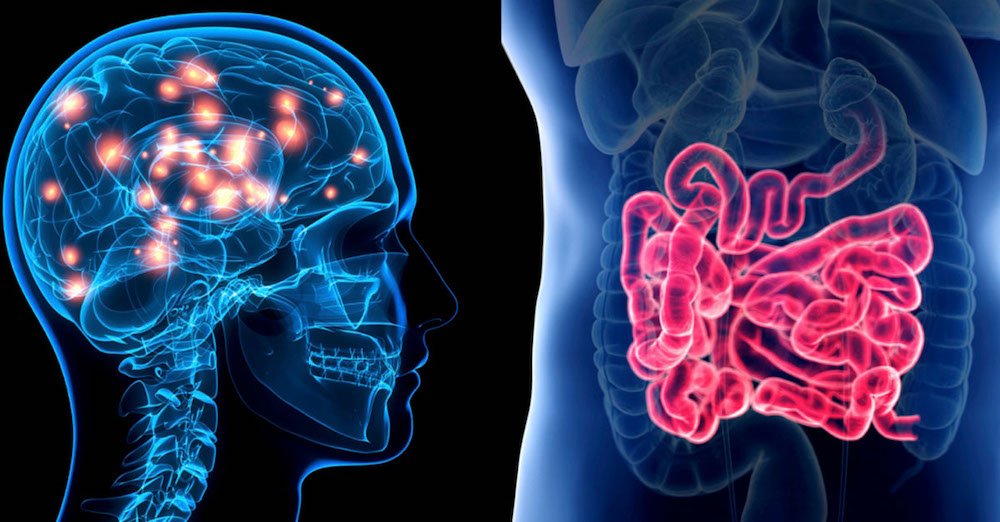The enteric nervous system (ENS), sometimes referred to as the second brain, is embedded in the lining of the gastrointestinal system and is the largest component of the autonomic nervous system which also controls other involuntary functions such as heart rate, blood pressure, and breathing rate.
Through its vast web of hundreds of millions of neurons, the enteric nervous system is constantly monitoring the health of the digestive tract from the esophagus to the anus, communicating with the central nervous system (CNS) to maintain balance throughout.
When we talk about a gut feeling or “butterflies” in the stomach, we are essentially referring to the ENS. There is bidirectional information flow between the ENS and CNS. While the ENS normally communicates with the CNS via the parasympathetic and sympathetic nervous systems, it is composed of sensory neurons, motor neurons, and interneurons, all of which make it capable of carrying reflexes and acting as an integrating center in the absence of CNS input (Rao and Gershon 2016). The ENS has essential functions including controlling the motor functions of the gut (the tone of the gut and the velocity and intensity of its muscular contractions), local blood flow, mucosal transport, and secretions, and modulating immune and endocrine functions.
The ENS makes use of more than 30 neurotransmitters, most of which are identical to the ones found in the CNS, such as acetylcholine, dopamine, and serotonin. More than 90% of the body’s serotonin is in the gut, as well as about 50% of the body’s dopamine, which is currently being studied to further our understanding of its utility in the brain.
The human gastrointestinal tract harbors a complex and dynamic population of microorganisms known as the gut microbiota. The genetic content of the microbial communities in our gut outnumbers the human genetic content of our whole body by approximately hundredfold (Ley, Peterson, and Gordon 2006). In a review by Carabotti and colleagues (2015), the authors concluded that strong evidence suggests that gut microbiota has an important role in bidirectional interactions between the gut and the nervous system. It interacts with the CNS by regulating brain chemistry and influencing the neuroendocrine systems associated with stress response, anxiety, and memory function.
While antibiotics are crucial for fighting many serious infections, their use has a huge impact on our gut microbiota and therefore on the relationship between the gut and the nervous system. A study by Lurie and colleagues (2015) reported that one course of antibiotics can increase the risk of major depression by 24 percent and anxiety disorders by 17 percent. The study also found that two courses of antibiotics in a one-year period increased the risk of major depression by 52 percent and anxiety disorders by 44 percent. A systematic review by Wallace and Milev (2017) reported compelling evidence for probiotics alleviating depressive symptoms but noted that more research is warranted to further assess efficacy.
References:
Carabotti, M., A. Scirocco, M. Maselli, and C. Severi. 2015. “The Gut-Brain Axis: Interactions Between Enteric Microbiota, Central and Enteric Nervous Systems.” Annals of Gastroenterology 28 (2): 203-209.
Ley, R., D. Peterson, and J. Gordon. 2006. “Ecological and Evolutionary Forces Shaping Microbial Diversity in the Human Intestine.” Cell 124:837-848.
Lurie, I., Y. Yang, K. Haynes, R. Mamtani, and B. Boursi. 2015. “Antibiotic Exposure and the Risk for Depression, Anxiety, or Psychosis: A Nested Case-Control Study.” Journal of Clinical Psychiatry 76 (11): 1522-1528.
Rao, M., and M. Gershon. 2016. “The Bowel and Beyond: The Enteric Nervous System in Neurological Disorders.” Nature Reviews Gastroenterology & Hepatology 13:517-528.
Wallace, C. and Milev, R. 2017. “The effects of probiotics on depressive symptoms in humans: a systematic review.” Ann Gen Psychiatry 16(14).
